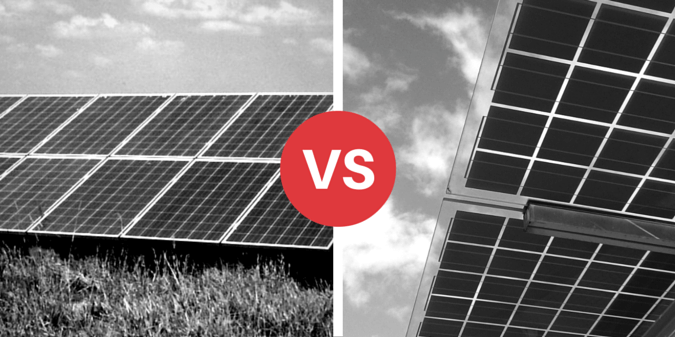The overall assessment approach for rooftop solar photovoltaic (PV) developments is the same as for large-scale ground mounted PV developments however some variations exist due to the difference in size, panel orientation and location. The following article presents an overview of the different assessment characteristics for ground mounted and rooftop developments.

Difference between rooftop and large-scale ground mounted developments
The significant difference is that the number of potential receptors and the overall duration of any impacts tend to be less for rooftop developments compared to large-scale ground mounted developments. This is because the panel area is smaller, and because the visibility of the panels is often restricted to a smaller number of receptors.
What could require assessment for a rooftop or large-scale ground mounted developments?
The four most common receptors that could require assessment are presented below:
- Dwellings that could have a view of the panels.
- Road users that could have a view of the panels.
- Airports that could be affected by the development.
- Railway lines adjacent to the property with the panels.
With regard to aviation, a glint and glare assessment would typically be required for developments within approximately 5 km of an airport. In some cases, assessments are requested at greater distances, particularly if a development lies beneath a final approach path.
Assessment parameters comparison
Table 1 below presents a comparison of the assessment parameters for rooftop and large-scale ground mounted PV developments.
| Parameter/Development type | Rooftop PV Development | Large-Scale Ground Mounted PV Development |
| Typical power output | Up to 1MW | 1MW + |
| Typical size | In the region of square meters. | In the region of hectares |
| Most Likely Receptors [1] (top two) | Aviation and dwelling receptors | Road and dwelling receptors |
| Least Likely Receptors [2] (bottom two) | Roads and railway receptors | Aviation and railway receptors |
| Distance to assess to | ~5km but sometimes out to 30km (based on aviation receptors) | ~5km but sometimes out to 30km (based on aviation receptors) |
| General location of solar reflections | Many directions – based on rooftop design | Mostly east and west due to preferred southern panel azimuth angle |
| Case Study | Tate Modern Rooftop Development | Coolroe Solar Energy Development |
Table 1: Comparison of the assessment parameters
Summary
Adverse effects are often more restricted for rooftop developments compared to large-scale ground mounted developments. However, this does not remove the requirement for a glint and glare assessment.
